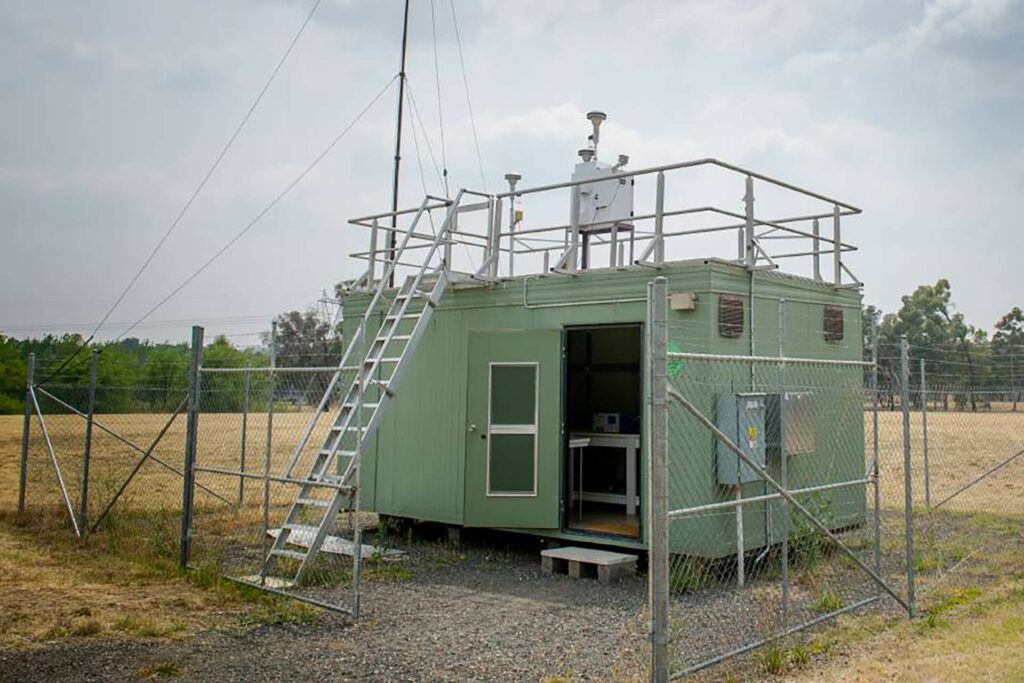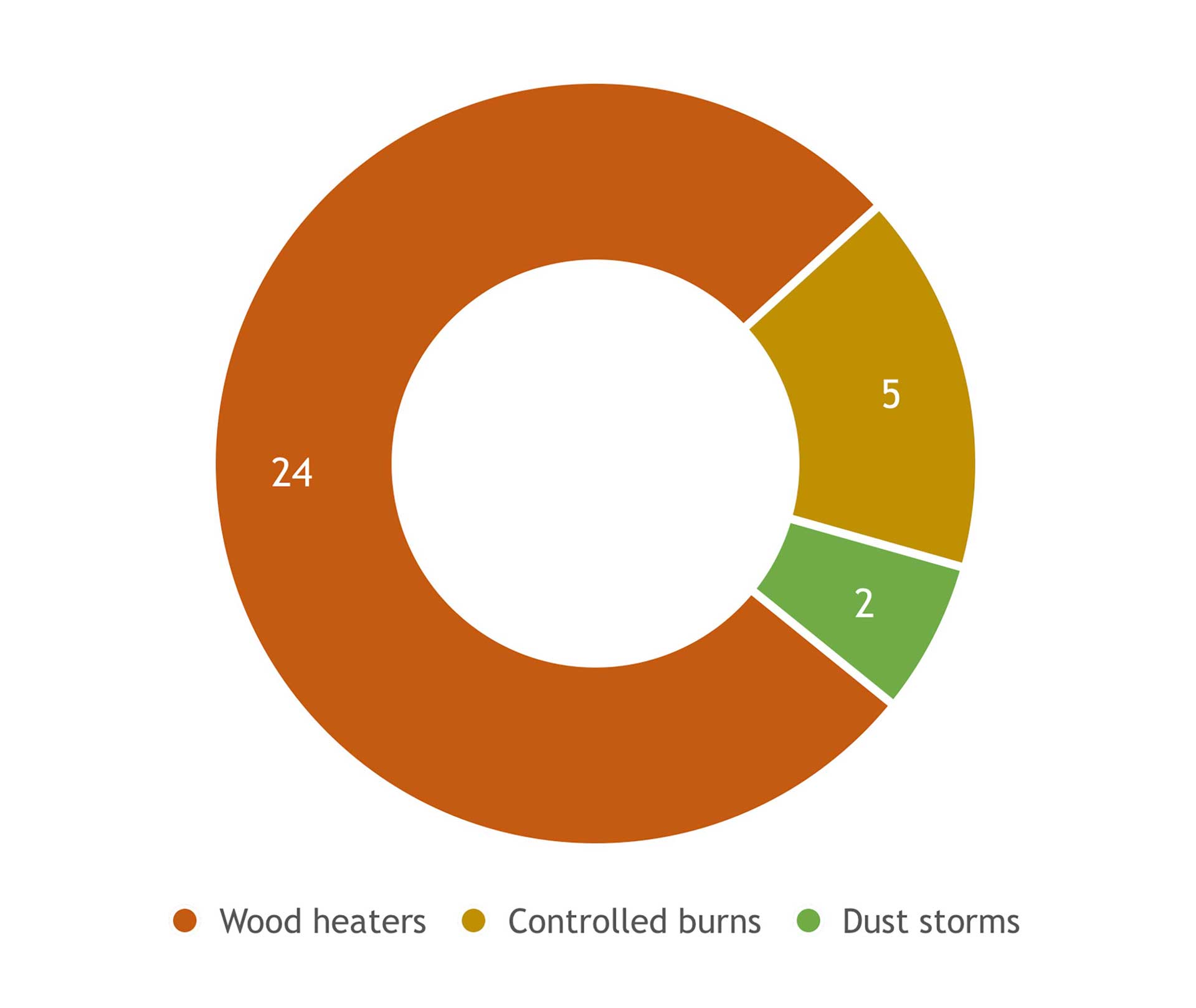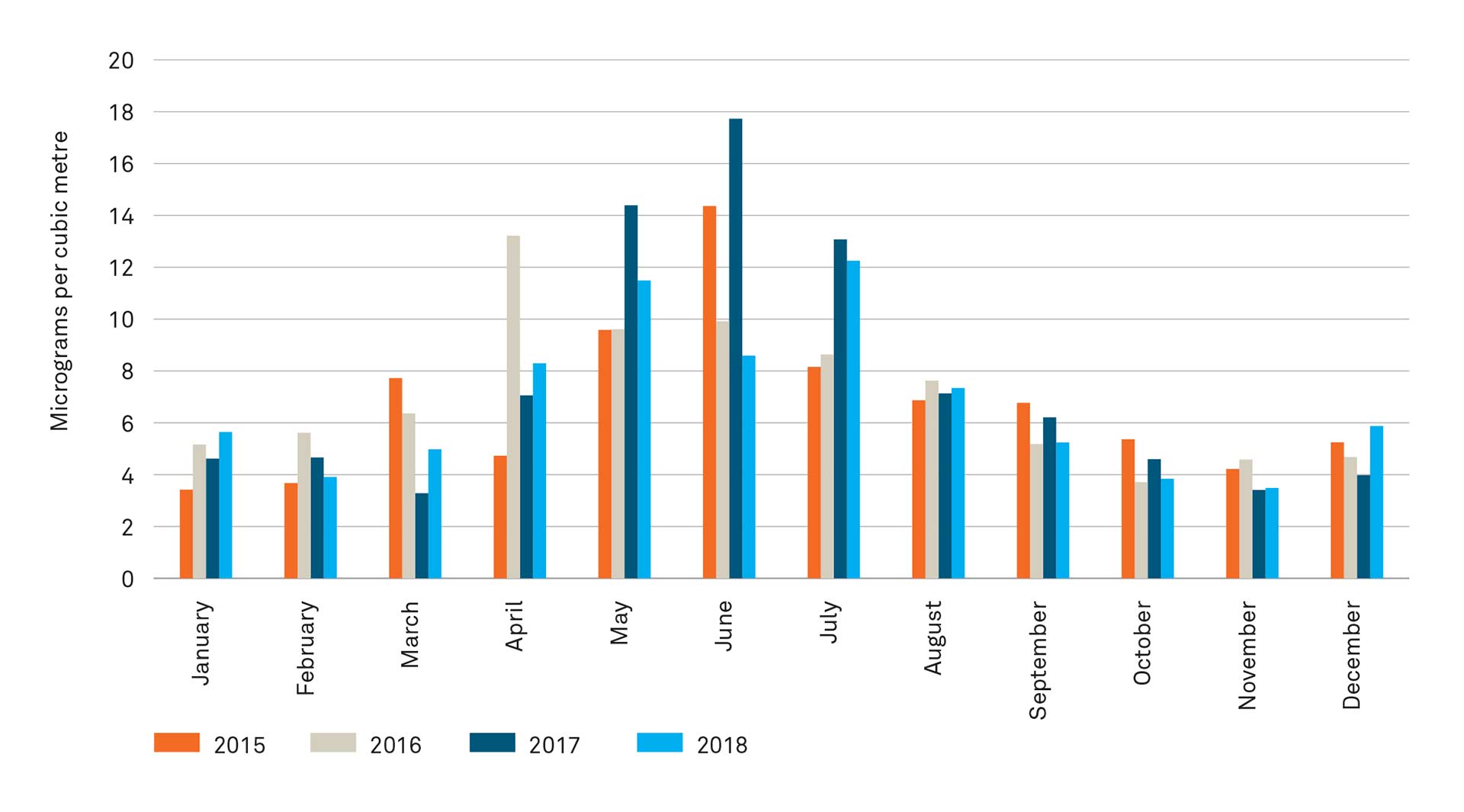- Air pollution from the 2019-20 fires
- Canberra’s air quality
- Particulate pollution
- Transport pollution
- Climate change and air pollution
Air pollution from the 2019-20 fires
The 2019 ACT State of the Environment Report covered the period to June 2019, so did not include the 2019-20 bushfiresA fire that burns in grass, bush or woodland and can threate More. Information on these fires and their impacts has been added to this material in recognition of the devastating impacts on the region.
BushfireA fire that burns in grass, bush or woodland and can threate More smoke from both the ACT and NSW fires severely impacted Canberra’s air quality. Over the 91 days of summer, air pollution monitoring at the Monash Station in Tuggeranong showed that there were periods on 56 days where the pollution levels exceeded the national standards for health – and 42 days had periods above the hazardous to health rating. For many days, the air quality in Canberra was the worst of any major city in the world, and the worst in Canberra since air quality monitoring began in the early 1980s.
The smoke impacted Canberrans’ health, everyday lives and work. Many businesses, institutions, services and attractions were forced to close, with social and economic consequences. Canberrans were advised to stay indoors whenever possible, with the vulnerable urged to take extra care.
BushfireA fire that burns in grass, bush or woodland and can threate More smoke caused an estimated 31 excess deaths in the ACT, as well as 318 hospital admissions.
What are the main air pollution findings from the 2019 ACT State of the Environment Report? See the infographic below to find out.
Canberra’s air quality
There are two main air quality monitoring stations in the ACT. These are the Monash station in Tuggeranong, and the Florey station in Belconnen. The stations monitor levels of carbon monoxide, nitrogen dioxide, ozone, Particulate matter 2.5Particles in air 2.5 micrometres or less in diameter. These More (also called PM2.5) and Particulate matter 10Particles in air 10 micrometres or less in diameter. These p More (also called PM10) in the air. The monitoring determines whether the levels of these pollutants meet national standards. The standards set the acceptable levels of pollutants to ensure risk to human health is minimised.
Air pollution depends on weather, the amount of pollutant emissions, and whether the area is flat or has valleys and mountains. For example, wood smoke levels are greater in winter in the Tuggeranong valley than in other areas of the ACT largely because of the landscape.

Particulate pollution
Particulate matter 2.5Particles in air 2.5 micrometres or less in diameter. These More is the most serious air quality problem for the ACT, with levels at times that can affect some people’s health. High levels happen on calm autumn and winter days when pollution from wood heaters builds up.
Between 2015 and 2018, levels of Particulate matter 2.5Particles in air 2.5 micrometres or less in diameter. These More in the ACT exceeded (were higher than) national standards on 31 occasions – with the Monash air quality station in Tuggeranong recording 28 of these. Smoke from wood heaters was responsible for most high levels of Particulate matter 2.5Particles in air 2.5 micrometres or less in diameter. These More causing pollution levels higher than national standards on 24 occasions – 23 of these in Tuggeranong. Other reasons for high Particulate matter 2.5Particles in air 2.5 micrometres or less in diameter. These More levels include controlled burnsAlso known as prescribed or hazard reduction burns, involves More (5 occasions) and dust storms (2 occasions). Of all the causes of high Particulate matter 2.5Particles in air 2.5 micrometres or less in diameter. These More levels, wood heaters are the easiest to address by switching to heaters that use clean energy, such as electricity which comes from renewable energyEnergy produced from natural sources that are constantly rep More sources in the ACT.
Between 2015 and 2018, levels of Particulate matter 10Particles in air 10 micrometres or less in diameter. These p More in the ACT were higher than national standards on eight occasions. These were all caused by dust storms originating outside of the ACT. Dust storms are strongly linked to the hot and dry conditions associated with climate change, and will likely increase in the future impacting on the ACT’s air quality (see Climate is changing section).
None of the other pollutants monitored in the ACT – carbon monoxide, nitrogen dioxide, and ozone – were at found to be higher than the national standards. Despite this, it is important to reduce air pollution as much as possible for our health, even for pollutants that are already lower than the national air quality standards. Particularly as some people are more sensitive to pollution than others.
Transport pollution
The ACT relies a lot on cars, which contribute to air pollution (see Human settlements and the environment section). The number of vehicles and how much we use them is increasing. Most trips around Canberra involve cars. Fewer than one in five trips involve public transport, cycling or walking, although people have used public transport more in recent years. Only one per cent of vehicles in the ACT are electric or hybrid.
The number of diesel-powered passenger vehicles in the ACT is increasing. In 2010, they represented four per cent of all passenger vehicles. In 2019, it was 12 per cent. This large increase is concerning, as diesel engines generally emit more nitrogen oxides and far more particles than petrol engines.
Climate change and air pollution
Higher temperatures and reduced rainfall associated with climate change are likely to increase the impact of smoke and dust on air quality. Higher temperatures in future are also likely to speed up the chemical reactions that create harmful ozone gas in the lower atmosphere. Controlled burning to reduce the severity of bushfiresA fire that burns in grass, bush or woodland and can threate More is likely to increase the amount of smoke in the air.






